-Can you tell us about your experience as Lead-Animator at Redfrog Studio and what does it consist of?
I was hired in 2021 to be the lead animator on the series "The Knickers Bros", a 52x 11 min series. It seems like nothing but by doing a simple math, we realize that we have about 85800 frames to produce... all produced in Toon Boom with rigs that should normally allow us to do massive redraw.
When you start a series you need organization and rigor, otherwise it does not last.
1. We get in touch with the director, we see what he/she expects on the series, we have to understand the style, define the direction of the animation. We make tests which are reviewed by the director, this one gives his opinion (sometimes very decided) and we establish the wanted direction.
2. We establish a documentary literature that will serve for the training / inclusion of animators, the purpose of this doc is to provide them with a framework, they can grasp the will of the director, this to minimize the corrections given by the director, the methodology is also to be considered. (see below for an example of a doc sheet), the lead anim is not necessarily involved in the creation of the graphic bible, but he can amend it or add things if they have not been planned by the design teams.
3. We constitute the team. We pre-select the candidates on the basis of their reel demo then we make them pass a test. A production is work but it is also a human adventure, the team must work both in terms of quality but also in interpersonal relationships. Often we like to work with people we already know because we know their strengths and weaknesses and that's essential to split the work.
These are just the beginnings. Now we get to the heart of the matter: The production.
Producing a series is dense, our animators work with daily quotas, my role as a lead is to help them reach these objectives by providing them with the tools and the adequate help to achieve their goals. This involves training, advice and assistance. You have to guide the team towards its objective, and there is no point in pushing people too hard, you simply have to give them the means to be effective. On the other hand, we have the right to expect people to show a great work ethic and to help each other to achieve the common goal.
The first episodes of a series are the hardest, nobody knows the project, no reference or reuse material is available at first. You have to debrief a lot.
©Gérault Bruyère
We often start by analyzing the episode, we look at the animatic, we cut the sequences, we note the levels of difficulty of the shots, we annotate the episode with remarks for the animators don’t make too much mistakes.
At the beginning I produced shots with the team to set the tone and also show them what the director could expect.
Later on my work focused on reviewing and correcting the shots, all this was done via shotgun and shot grid. I did a textual critique of the shots, formulated by points (a retake = a numbered sentence and only one retake point per sentence). The retakes were completed with explanatory or corrective drawings like so :
©Studio Redfrog
Managing a team takes a lot of time and energy, it's a challenge, but when you feel that team gaining confidence, and when you see the animators progress, it's a great reward.
-Can you tell us about your role as an educator at pole 3d and your approach to teaching animation?
I have been teaching for several years now, and this for different schools, I first gave courses at e-artsup. And recently I intervene punctually at pole 3d.
My approach to teaching animation to new generations is to master the technical language of animation and directing. I opt for a rather fast handling of the 2d softwares. The drawing phase remains important, even predominant. But it is necessary to have a technical expertise in animation software. This is important if we want students to be able to enter the professional world. I also spend time redrawing over the layouts they propose to show them my intentions, or point out mistakes.
I try to create an atmosphere for the classes that are closer to the end of their studies that is close to what the students might encounter in a company.
Animation is a field I am passionate about, I try to transmit this passion to them, I need the class to be quite interactive and for the students to also participate "physically" in the class. What I mean by this is that not a class goes by without me encouraging the students to mime the actions they want to represent in order to understand the mechanics and logic of the movements. Often students are a little afraid of embarrassing themselves by miming the actions. This is a shame. I try to encourage them to come out of the closet by also miming the actions myself (thus giving the students an opportunity to laugh at low cost)
Animation is the narration by the movement, we are not just going to let the camera turn and wait for the magic of an actor's performance. Here in animation, everything must be expressed and meaningful. The slightest frame participates in the expression of emotions, dynamics or the state of mind of a character or anything else.
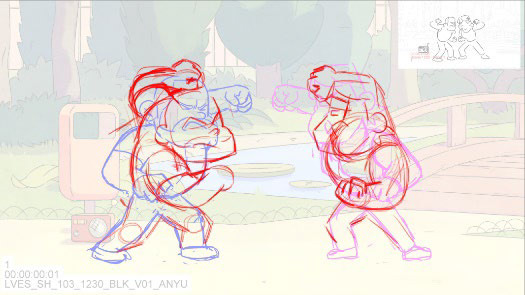
©Studio Redfrog
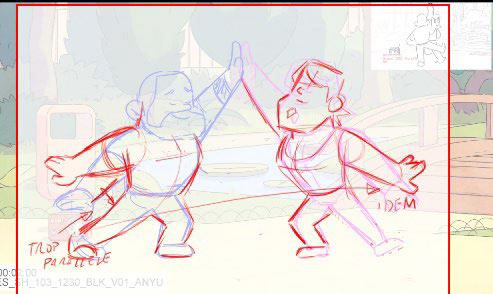
©Studio Redfrog
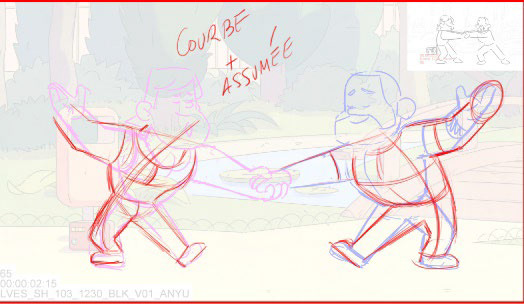
©Studio Redfrog

©Studio Redfrog
Nothing can be done by chance. I would like to see students have access to acting or body expression classes as part of my classes.
I've met some animators who had a sport or a hobby that allowed them to act with their body and to control it better. They often had a more relevant approach to certain types of animation because they used their visual and body language skills to do what was being asked of to them.
-What challenges did you face in managing a team of 20 animators while working on a series?
This period, although short, was complicated. Managing 20 people is possible when you can count on a certain autonomy from the team. However, many of the team members were just starting out. Unfortunately, I could not coach people as well as I would have liked. The "seniors" or the "middles" know how to manage, they are not at the start of their career and they can be given more room to grow. But the younger people really need stronger support.
The Covid crisis and the remote work has not made things easier as you can imagine. People have also been more fragile and sensitive in this period. Human management has been more delicate. Remote work is a good thing, but it can slow down the acquisition of good reflexes, the transmission of knowledge from older to younger people. However, if the lead must provide support, he/she can also, by placing these animators skilfully in the work space, encourage the transmission of experience. (Systematically put the younger animtators in contact with the more experienced ones.)
Managing to maintain focus when the internal messaging system is in constant turmoil with animators looking to you for help can be difficult.
The most annoying part of this situation is not getting to know at least a minimum all the people you worked with, because time did not allow it.
Some animators may have been frustrated that I couldn't always give them time for more detailed explanations.
Fortunately, I already had time to train the first 10 animators before I had the two groups, which allowed for an exchange of knowledge between the teams without me always being called upon. I always encouraged people to communicate with each other to make our work processes more fluid.
-Can you tell us about a particularly difficult experience you faced while working on TV series and how you overcame it?
Working on a series implies managing the time of the animators with care and reflection, you have to know your team well. You have to challenge the animators so that they progress, but you also have to avoid giving them unattainable objectives or objectives beyond their competence. A detailed reading and analysis of the boards and their stakes is essential in order to avoid making mistakes in the allocations made to the teams.
During the production of "The Knickers Bros", in order to meet the production quotas, it was necessary to carry out an in-depth reflection on the use of templates (recoverable animation elements) and common libraries so that everyone could benefit from the production elements.
Toon boom is a great tool, but it requires a lot of rigor and organization if it is to be used efficiently. We therefore had to write a complete methodology so that the templating processes would be well applied by the team.
We have then created very extensive libraries of hands, faces, attitudes etc.... in order to be more efficient. Each episode produced required a small debriefing so that we could decide what to put in the libraries. Then in my analysis docs I would give template information directly to the teams.

Some Character design on Gerault's project "The verdict", ©Gérault Bruyère
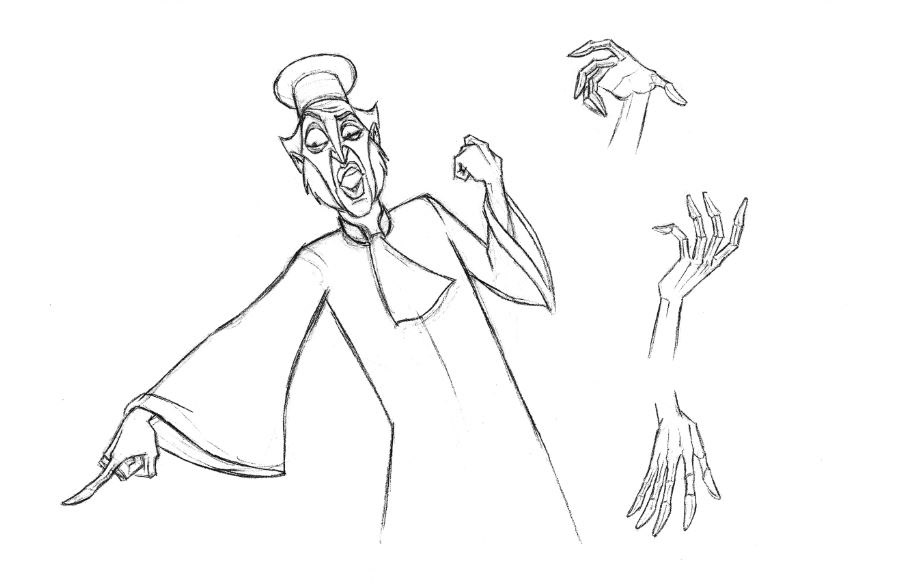
Some Character design on Gerault's project "The verdict", ©Gérault Bruyère
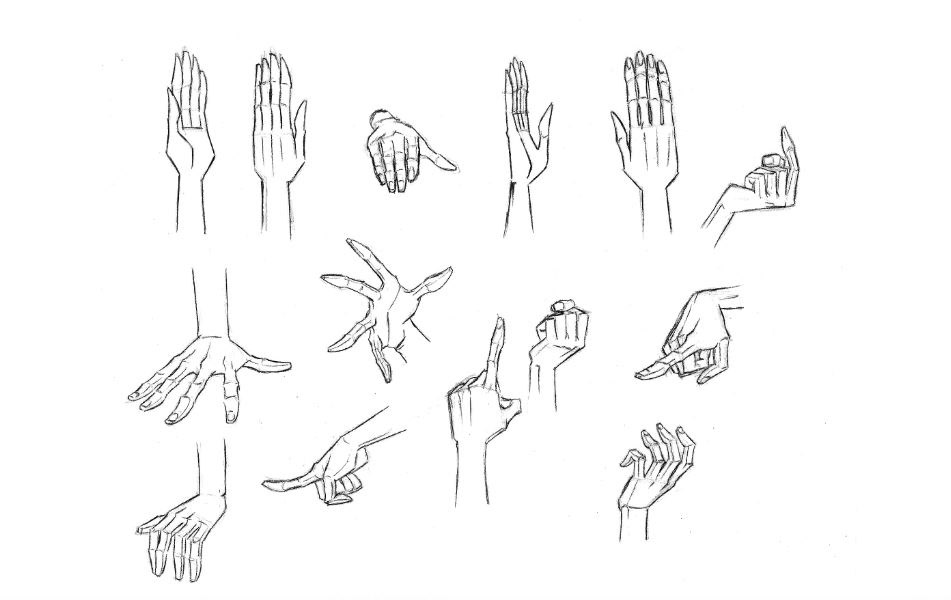
Some Character design on Gerault's project "The verdict", ©Gérault Bruyère
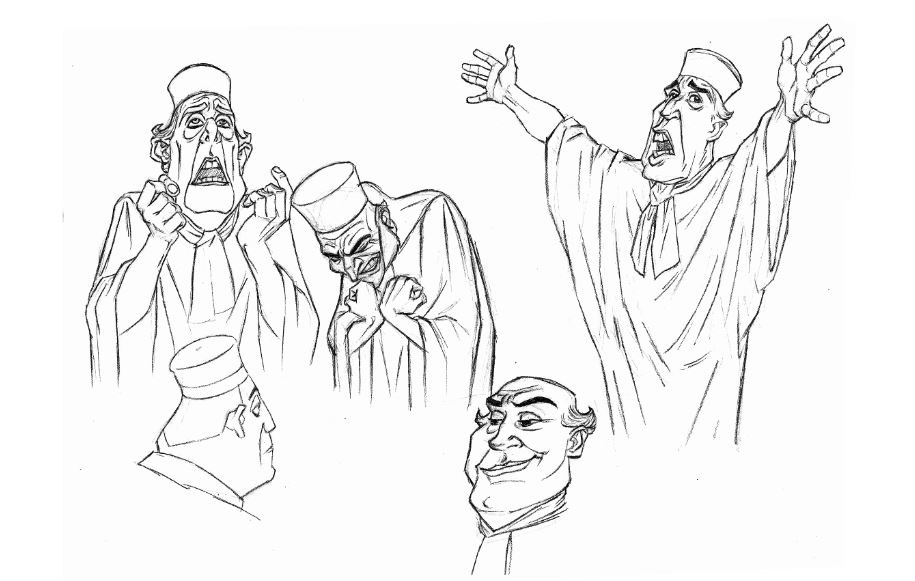
Some Character design on Gerault's project "The verdict", ©Gérault Bruyère
-What is your approach regarding the work methodology to lead a team?
As I said before, I think you really have to coach people (depending on their level of course). You have to give them the right methodologies, the ones that you've tested yourself and that you're sure are reliable. Working with rig toon boom requires a careful approach, you have to work in a certain order, respecting some rules. For example, I sometimes take the time at the beginning of a production to check the toon boom configuration of the animators because many problems can be avoided if you configure your preferences correctly.
You almost have to act like a teacher with the less experienced animators, explain them the basics of the software, sometimes re-explain things you take for granted but which are not. In this sense, the work of the lead is somewhat similar to that of the teacher and it seems natural to move from one to the other.
I try, as much as possible, to take the time to explain things well. The more precise I am in my explanations, the less feedback I will have to give and the faster the animators will gain confidence.
I base my approach more on benevolence, without however lacking firmness towards the animators. My feedback is detailed and my criticism is generally constructive. As much as possible, I avoid value judgments on the work of the animators because they can have a deleterious effect on morale. I will push people towards the best and I do not demand of them what I would not impose on myself.
I'm not saying this for the sake of demagogy, but I know that people no longer accept what I sometimes had to put up with at the beginning of my career. It is important that people have confidence in me because they will work all the better if they feel that their lead supports them.
-According to you, how has the animation sector evolved in the last few years and what role did you play in this evolution?
As for the evolution of the profession, I see big changes in the type of profile that we are able to recruit now in animation (at least in the field of series). Before, you had to be a cartoonist. You couldn't enter the world of animation without at least having a solid foundation in drawing. Now even a very average cartoonist can enter a production, which would have been more difficult before, the level of specialization has dropped.
On the other hand, an animator did not have to be as comfortable with computer tools as he is now. The "technical" aspects were less important. The technical knowledge of a software did not matter as long as one was able to animate.
The current situation has split the animators into two categories, the framers (people who are able to do great things with cut out puppets but who will not be very efficient when it comes to redrawing) and the "tradeux" in french (people who have a great mastery of drawing but who are irreconcilable with the technique and who will be unable to animate with a puppet). Some people have a versatile profile but it's still quite rare.
In lead, you have to deal with these different profiles, and I always ask to see the portfolio of the people I work with to know their drawing level.
Obviously the massive arrival of software like Animate, Toon Boom, Spine (for video games), Moho and many others have changed the face of the profession. It is now necessary to be a good technician in addition of being a good artist, combining the two is not always obvious. I have witnessed people who are very experienced in traditional animation but who started long before me struggling like crazy to adapt to all these new tools.
Let's say that I was "lucky" to arrive on the job market at a time when habits were changing and the share of traditional methods was becoming less and less important. I had to understand very quickly that it was either adapt or change jobs.
-Could you share some highlights of your experience as a 2d animator on the series "Nawak" ?
Nawak is a pretty cool show with very short episodes. I was an animator on this show and after being a lead, it can be nice to get your hands back in the production. When you supervise or when you lead, you sometimes get away from the basics of the job. Coming back as an animator can be really good.
Each new production is a little challenge. Here I was coming back to animate after 8 years where I had not worked on this software. I felt a bit like coming back to Ithaca after 10 years on the Ionian Sea. But finally, old reflexes come back quickly and you never really forget. I quickly got back on track (and I quickly remembered that there is no autosave on Animate).
Otherwise, it was a fun project and the team was great (thank you Anaëlle for the trust).
-How do you balance your responsibilities as a teacher and as an animator?
To start, I don't always do both. Employers (and I understand them) may not always see it as a good thing. They may have the impression that you are more dispersed and less focused. As a freelancer, I sometimes have slack periods. If this is the case, teaching is a way to stay active even if you don't have an actual contract. It allows you to maintain your knowledge and also to learn more, because sometimes in order to teach you have to learn.
You can have an agreement with your employer. The redfrog studio in particular has allowed me to combine teaching and professional activity.
An employer can also see a direct interest in having an employee in teaching, because it can allow him to do some scouting. The teacher spots talented people and can eventually pass on contact informations. In addition, the courses give a good idea of the students' skills. Companies are always looking for new talent (the development of the animation sector in recent years is quite important) and if we can get them from school ...
As said before, having a teaching experience is not negligible for a lead, it will allow you to work on your pedagogy and relational skills.
However, it is important not to apply the same system of thinking to a student as to a working animator. Some mistakes that are tolerable for one are not for the other.
-What advice would you give to aspiring animators and future trainers in this field?
For aspiring animators, my advice would be the following: be curious about everything, don't limit your interests or your passion to animation or its related avatars (such as video games), be interested in painting, engraving, sculpting. Cinema, History, Literature (including Comics) are fertile grounds for the imagination. Vary your iconographic sources, be attentive to what happens around you, observe the gestures of your baker, the walk of people in the street...
Even biology and certain hard sciences can give you valuable insights that can be used in animation. Knowing the human and animal anatomy will allow you to better understand how movements work.
Well, we are not going to exaggerate and claim the title of homo universalis of the renaissance artists, but you need an open mind.
For the trainers, the advice will be the same. A spirit that is curious about everything and that stays tuned to the evolution of the profession. Some social networks can also give the temperature and indicate the technical developments of the profession (eg linked in).
Be careful, a good professional is not necessarily a good teacher! If you don't like to repeat the same things over and over again, if you quickly feel frustrated when things don't go your way... Move on. Teaching requires patience, time and personal investment, and the time spent preparing for classes can be significant. Often we also have work that could be considered "unpaid" (e.g. right now I'm working on a rig for a workshop I'm going to do in February).
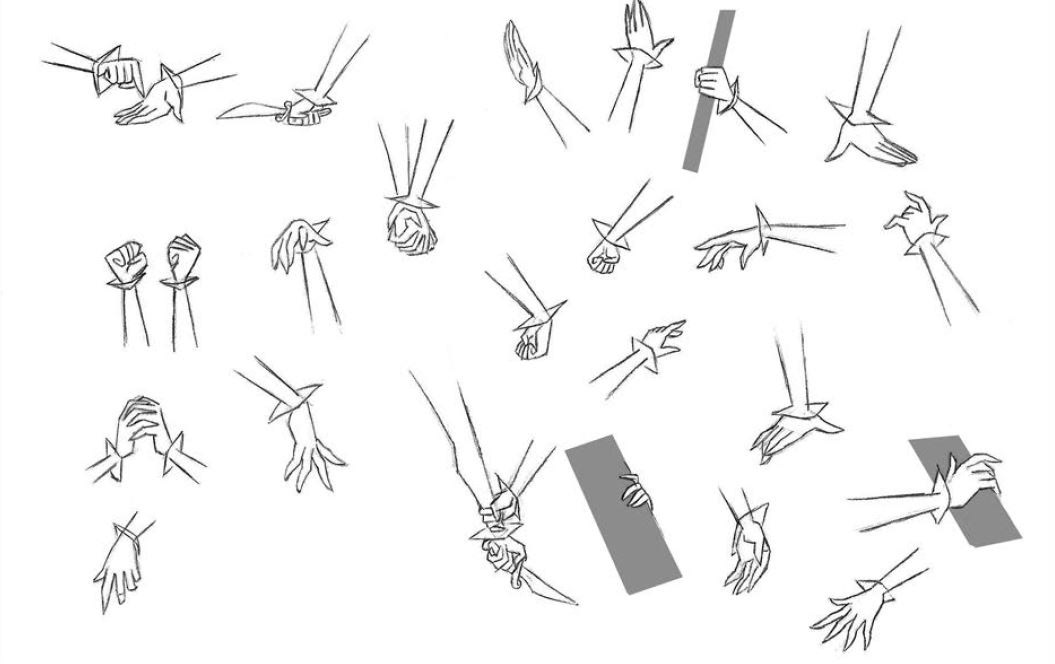
A sneak peak of Gerault's project "Venezia", ©Gérault Bruyère
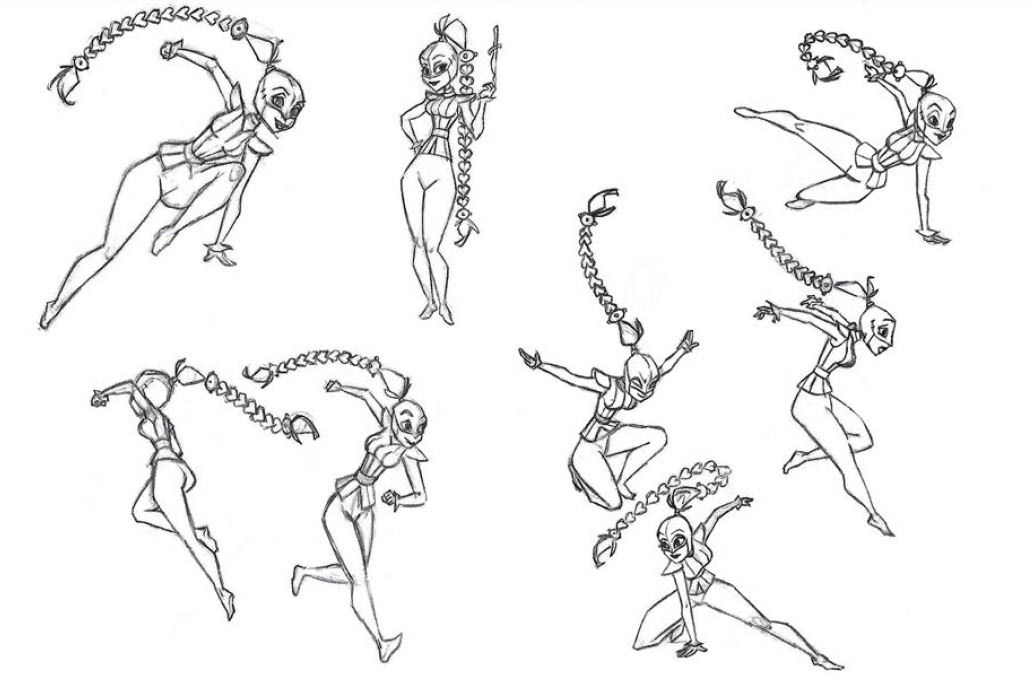
A sneak peak of Gerault's project "Venezia",©Gérault Bruyère

A sneak peak of Gerault's project "Venezia",©Gérault Bruyère
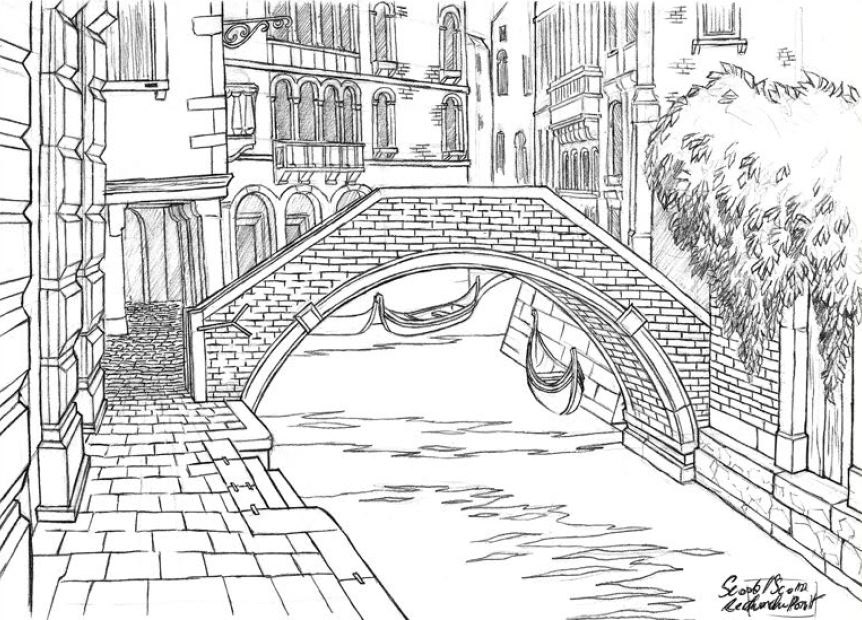
A sneak peak of Gerault's project "Venezia",©Gérault Bruyère
-What are the projects you are interested in?
I am in contact with several companies right now, I should start on a short production in March (I can't say more for obvious reasons). It will be a short project.
At the same time, I intend to train a little more as a rigger and even if it's extremely technical, I'm very interested in it, a string to add to my bow. Even if I don't intend to make it a profession, it will help me a lot for future projects where I will be hired.
I also have small personal projects, they have a limited ambition for the moment because I want to train a little more solidly before making my own direction. Directing a film and doing animation are not exactly the same thing. I'm not sure yet of my ability to make my own films. I want to test myself like you do with iron in a forge.
-What is your creative process and what inspires you when working on new projects?
I will often produce a lot of drawings, graphic references, I always like to do things simply, with my little sheet of paper and my pencils. I am always attached to the physical sensation of drawing, to the gesture, to the line... it must come from my beginnings.
When I do animation (and even when I was doing 3d), I often make little thumbnails on paper before I start working on a software.
What inspires me depends on whether it's a personal or professional project. Some projects, when you see them, you get itchy fingers and think I'd love to do animation on this! I'd like to challenge myself right now. Getting out of the puppet world and doing traditional things again.
The people you work with can also get you enthusiastic, you can meet a director, production managers or animators that make you want to work without you even seeing the hours go by because your days are so exciting and challenging....because you know you're going to work but also have a good time.
But really, a lot of things are inspiring to me. I'm just not fully happy when I'm not doing something related to animation. I love my work and when I look around, I think that being able to say that is an inspiration in itself.


